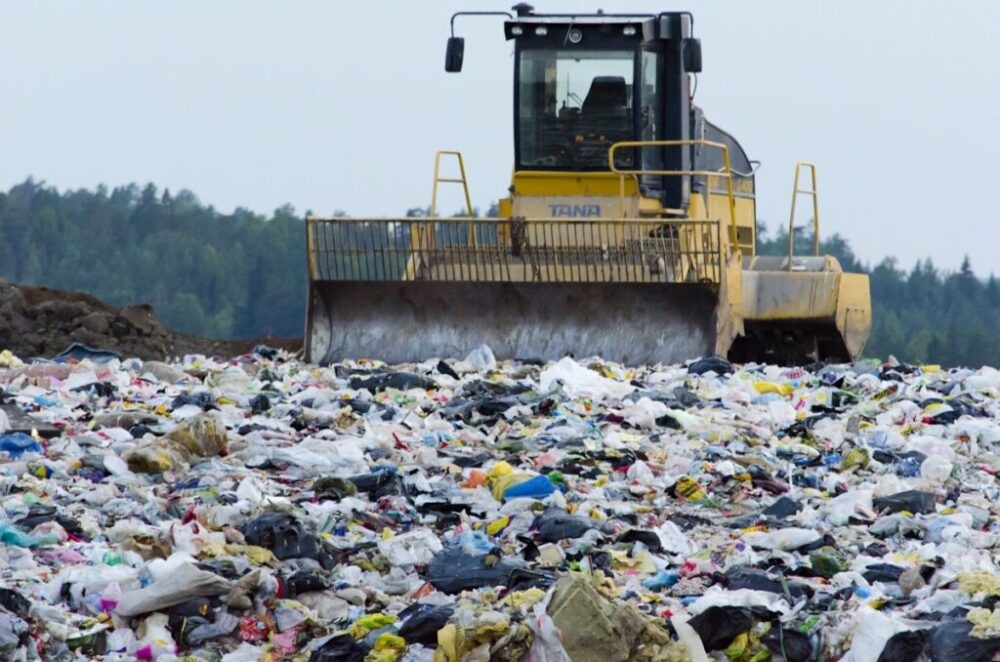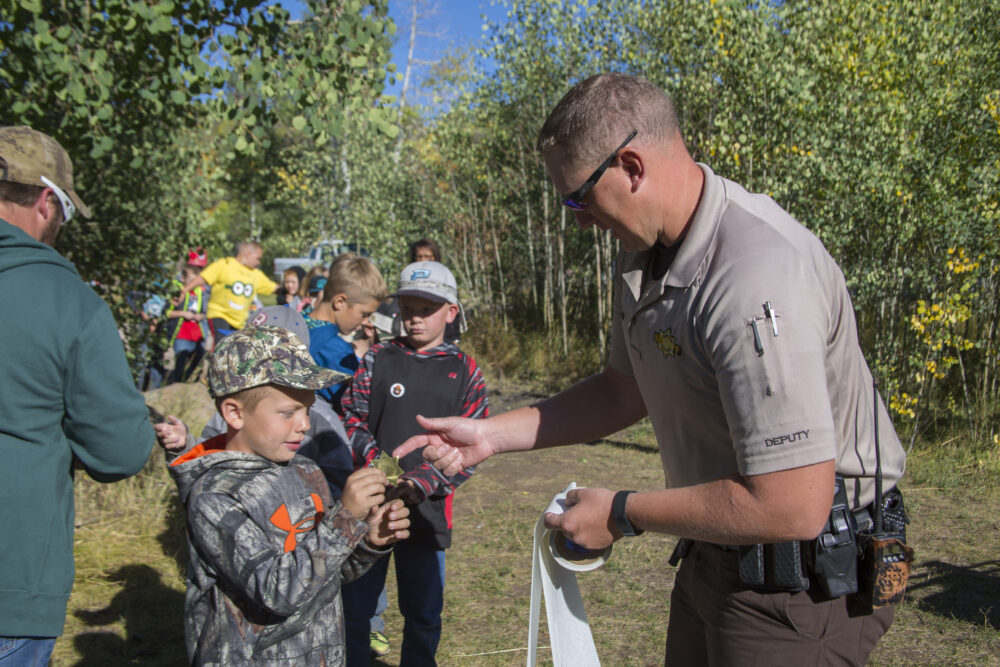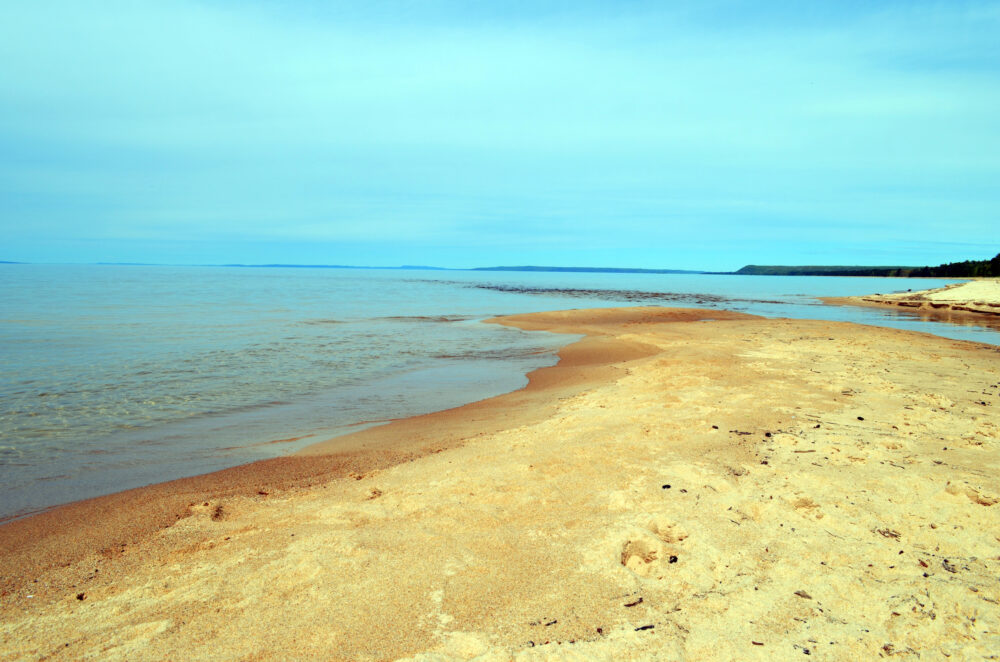We have much more to do and your continued support is needed now more than ever.
Setting the Woods on Fire
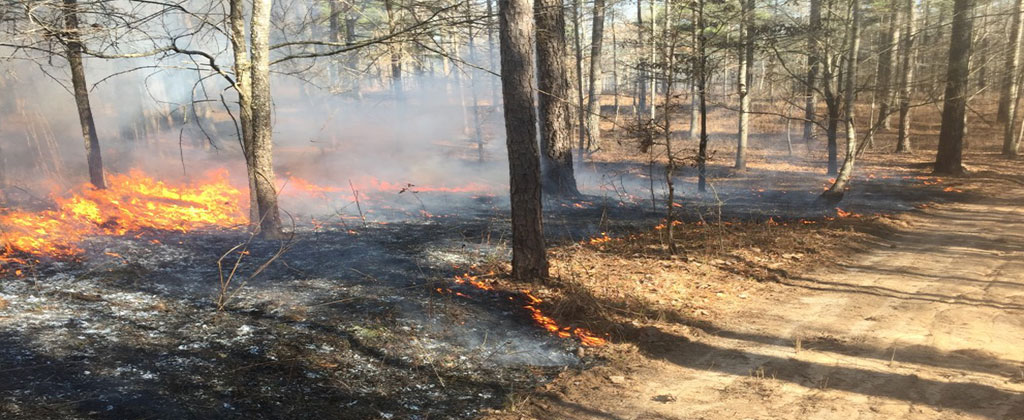
Two weekends ago I received the call I had been waiting for. The necessary weather elements—temperature and relative humidity, among other variables—had combined to create great conditions for a prescribed forest fire. And better yet, I was invited to help!
Hands down, my favorite forest management activity is working alongside landowners to assist with controlled burns in Southeastern pine forests that are adapted to fire. This time, I’d be helping my uncle and aunt, who own forestland in northeast Georgia.
With so many catastrophic forest fires in the news, I often get asked, “Why would you want to burn a forest on purpose?” The answer is simple—and also complex.
In certain forest and other so-called “fire adapted” or even “fire dependent” ecosystems, prescribed fire is one of the most economical and ecologically-friendly tools landowners have to manage their land. Many Southeastern pine forests, such as longleaf pine, are well-adapted to survive and even regenerate after fire. Loblolly forests, such as the one we were going to be burning, can also benefit from prescribed fire.
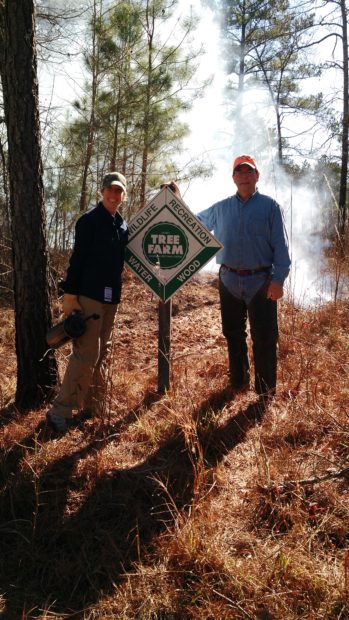
Periodic prescribed fire in southern pine forests helps maintain a park-like appearance where the open canopy of the trees allows for sunlight to stream to the forest floor for plants to sprout and grow. These low-intensity fires also improve the quantity and quality of forbs, legumes and other vegetation that are important habitat for wildlife such as white-tailed deer, mourning doves, and wild turkey, allowing them to travel, forage and find shelter in these forests.
One of the first steps of planning for a safe and controlled prescribed fire is to establish fire breaks, or obstacles that are used to contain the fire within the burn area. My uncle and aunt had set the breaks and prepared the equipment (tractor, rakes, and water) before my arrival.
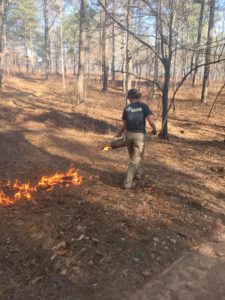
On this brisk February afternoon, I learned how to put out a fire that I had mistakenly set in a specific wooded area. After a bit of miscommunication on my behalf, I accidentally lit a pine and hardwood section, which wasn’t supposed to be burned because it had a heavy fuel-load from the thick brush. Quickly the fire started growing and moving. Thankfully, right away my uncle drove over with the tractor and water tank to extinguish the larger flames as we raked and flapped out the smaller flames. Tensions and stakes were both high during this 30 minute time-span, but from my uncle and aunt’s proper preparations, the fire was effectively maintained and extinguished.
Later in the afternoon we spotted a young Timber Rattlesnake making its way across a firebreak to escape to a previously burned section of the woods. Keeping a safe distance, we were able to divert the snake into a nearby hole that it could burrow for shelter.
The benefits created from a control burn for wildlife habitat and shelter far outweigh the individual loss that potentially occurs from a fire. Most wildlife species are adapted to survive low-intensity burns and will burrow down in holes, climb to a safe height, or outrun the flames. For instance, my aunt and uncle’s controlled burn was specifically done to improve the habitat for the wild turkeys that populate the area, as this burn will open up the woody understory and help with the growth of native grasses, forbs and legumes.
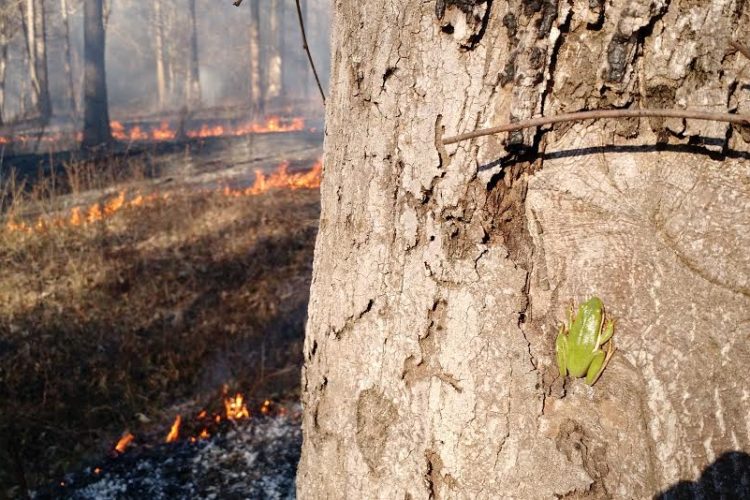
The National Wildlife Federation’s Southeast forestry program supports a wide array of sustainable forestry practices, including prescribed fire in the longleaf and other fire-adapted pine ecosystems.
Learn More Learn more about NWF’s southeastern forestry program.









